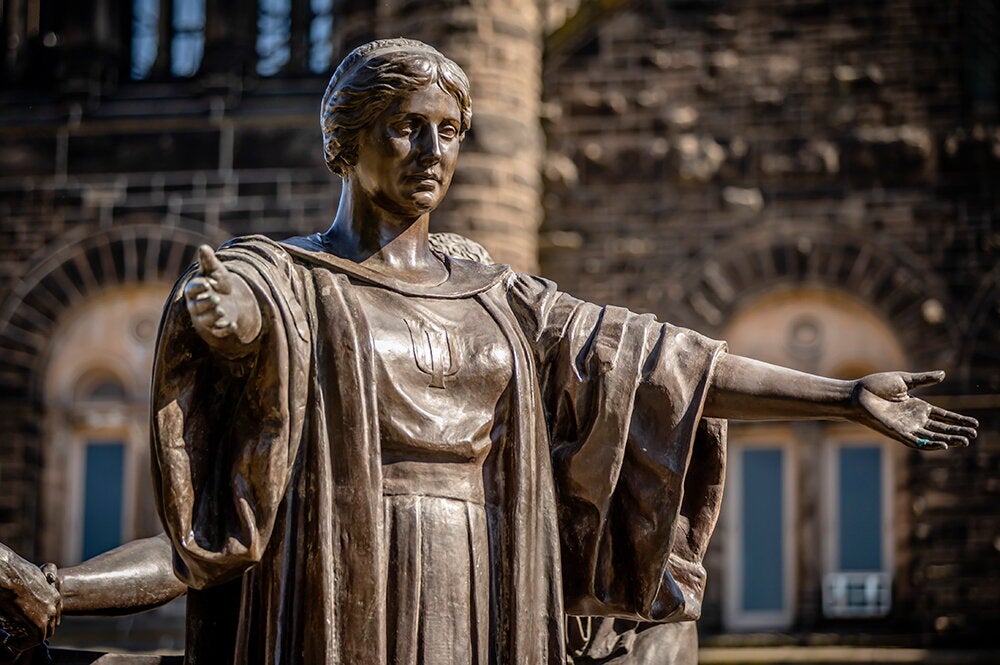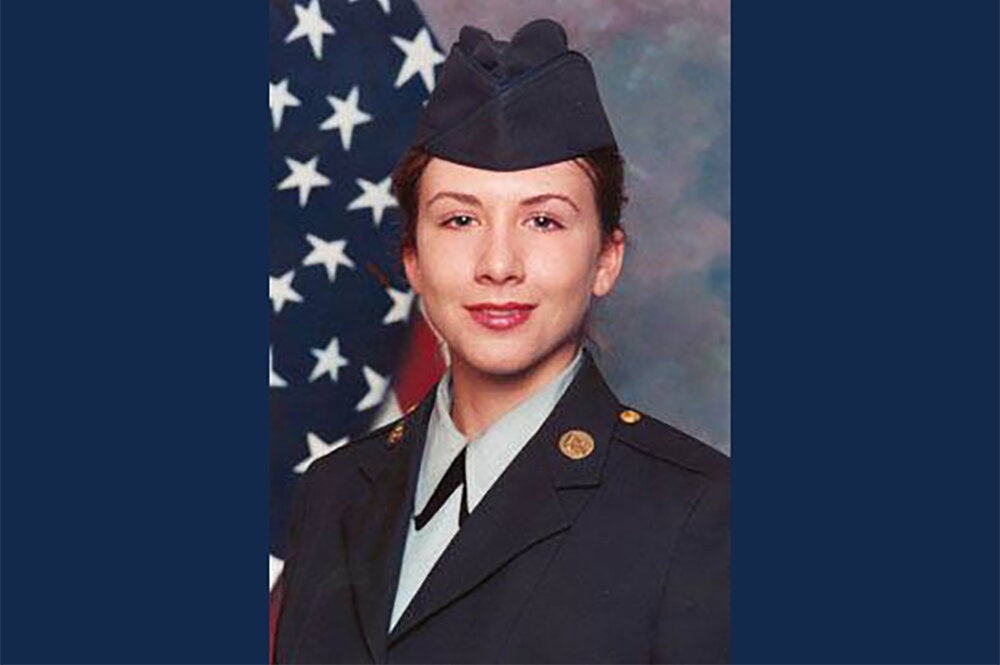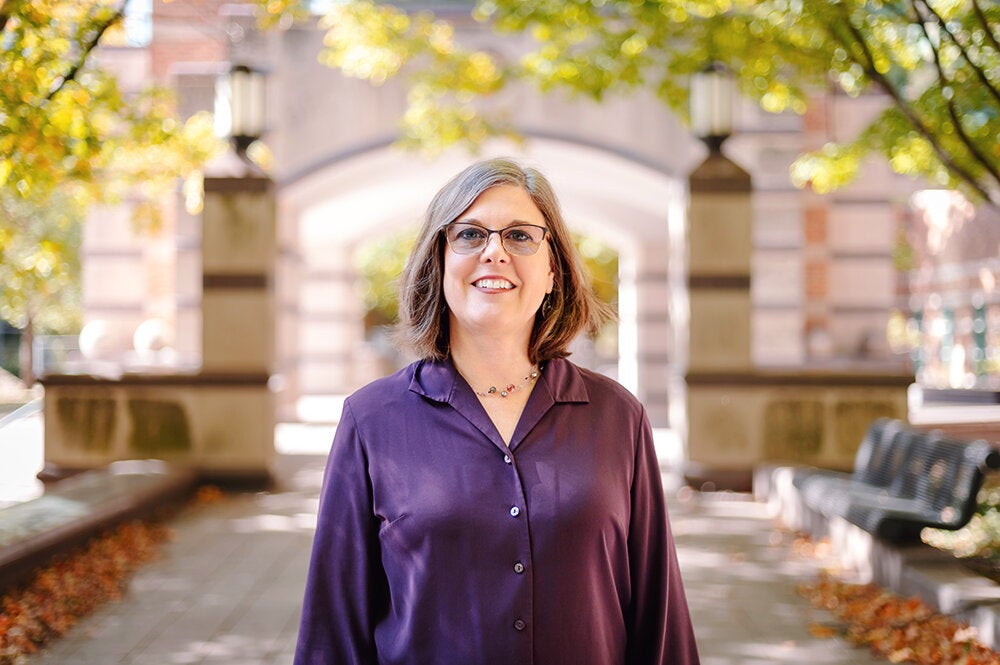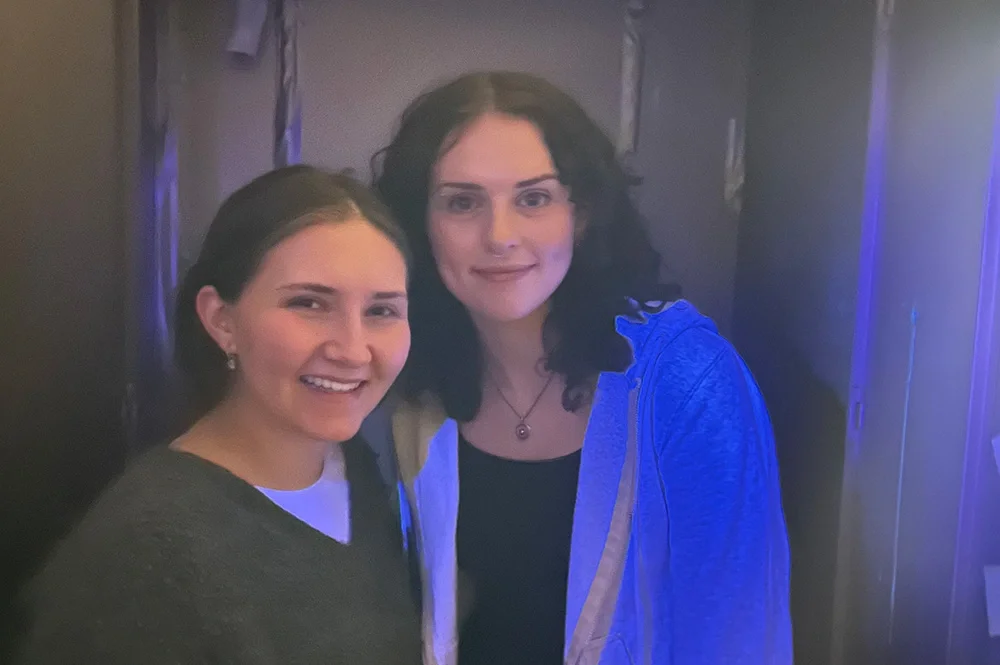
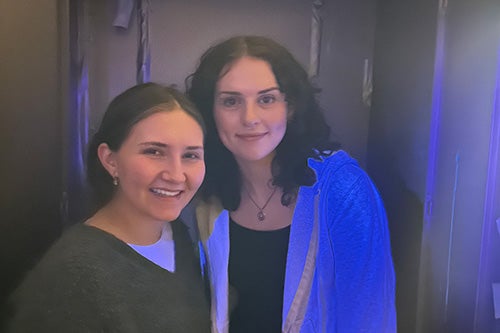
Editor’s note: Two College of LAS news writing interns, Ella Dame and Maggie Knutte, recently entered a new escape room created in the Psychology Building. Think a psychology professor and his students might have some ideas how to make an escape room particularly unnerving? Read on for a description of Ella and Maggie's experience in their own words.
When entering the Psychology Building and going to Room 154, both of us were transformed from College of LAS news writers into detectives as we prepared to solve an array of fictional mysteries and complete psychology professor R. Chris Fraley’s new escape room.
The door to Room 154 was different than any other lining the psychology building's uniform hallways. Bright yellow caution tape wrapped the entryway and warned anyone who dared enter.
The experience began as soon as we registered for the escape room on the website and read that the room had been sealed off ever since participants of psychology studies started to go missing in 2008. Our job was to find clues that could crack open the cold cases and discover the culprit behind the missing persons cases of a mother and her 12-month-old infant, a student, and an alumna.
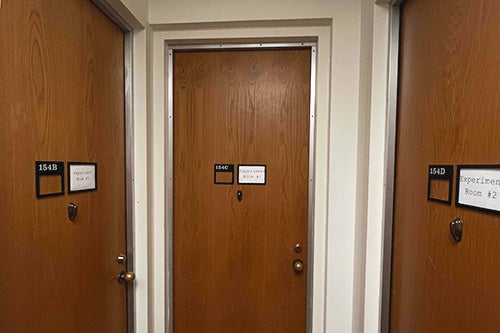
While we knew the escape room was based in fiction, there was an air of nervousness and uncertainty as we knocked on the door knowing we would actually be trapped in a space for the next hour. We were greeted by the character named “Cameron,” a journalism student investigating the missing person cases. Cameron was played by interdisciplinary psychology student Lyla Friedman, who rushed us inside and instructed us to drop our things. Unlike many other traditional escape rooms, our job wasn’t to solely escape or solve unrelated puzzles. We needed to solve problems and work to crack connected criminal cases.
The escape room, which opened Fall 2024, has been in the works for much longer than that. Fraley’s team of around 10 students helped brainstorm room ideas, puzzles, and themes to create the room. After that team collaborated on a foundation, a team of 20 technicians and actors worked to build the escape room, test it, and revise it. The project came to fruition after Fraley had done a few escape rooms himself and realized they functioned like experiments in his own field.
“Escape rooms are like miniature psychological experiments in which people are solving problems, facing time constraints, searching for clues, working with others, connecting ideas, etc., but in ways that were immersive and entertaining. We wanted to reproduce that experience in our lab,” Fraley said.
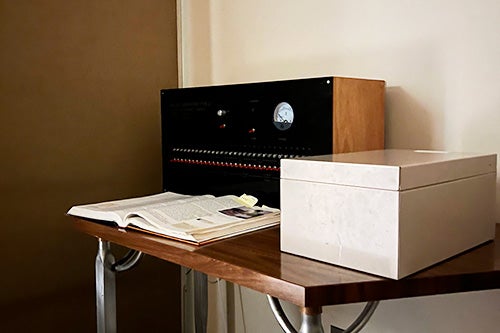
The experience took place in Fraley’s research space, which he and his students have spent the last two years transforming into an escape room. Inside there were three rooms located off a small hallway which served as our home base. The hallway was simple, with coat hooks and a large, loudly clicking timer set for 50 minutes. The atmosphere was eerie as Friedman carefully explained that if we got caught sneaking into these old psychology experiment rooms something terrible could happen.
The cold cases behind each door were individual and related as each missing person had come to Room 154 to participate in a different psychology experiment for the same professor. Fraley’s research team carefully designed the room to not only be educational and engaging but effective as an experiment. Part of this design process included identifying ways that acting and interaction between staff like Friedman and the escape room participants can shape how it works.
“Our goal is to observe participants’ behaviors, interactions with one another, and decision-making processes in real-time, which contributes to the lab’s study on attachment styles,” Friedman explained. “I subtly guide participants by providing hints and clues when necessary, ensuring they stay engaged without directly solving puzzles for them, as I want to allow them to move through the rooms and escape on their own as much as possible.”
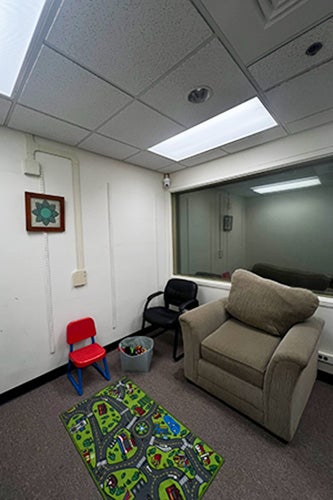
After being hurried into the first room, we had to use clues around the room to answer a couple of questions on a worksheet Friedman had given us. The room appeared like a normal room for children to play in, from toys to books to colorful rugs. As we shifted furniture and sifted through books, however, it become abundantly clear that a crime—and a bloody one—had occurred there. As we made our own connections between artifacts, we were able to determine what happened to the missing mother and her infant after participating in an obedience study.
As fast as we had given Cameron our worksheet of answers, we were rushed into a second room that was dark and creepy. The second room was vastly different from the first, giving us new problems to solve and ways to communicate with each other through obstacles. From decoding to descrambling to figuring out how to work through older video player technology, we had to work fast and in creative ways as our time dwindled down.
To remind us of the ticking clock, there were thrilling theatrics occurring while we tried to find out what happened to a missing student. Booming voices threatened to expose our presence and banging noises emphasized the dangerous energy of our crime solving. Friedman rushed in and out, urging us to hurry up and expressing the urgency of our problem solving, making the experience fast-paced and thematic.
After we uncovered all the information that we needed to solve the cold case of a missing student, we moved onto the third and final room. This room appeared to be a normal office at first, but there was one object that stood out--we'd tell you what it is but we don't want to ruin the surprise. We searched around the room for keys and clues to solve the final mystery while dodging jump scares and braving our own worst phobias.
Upon solving our last cold case and finding out what had happened to the missing alumna, we noticed a pattern that revealed a connection between all three cold cases. We heard a menacing confession and discovered a new clue that made us run for our lives out of the escape room, hoping we wouldn’t be the next victims.
It wasn’t until after our experience that Fraley and staff revealed they had been studying our behavior through the cameras placed in every room. From their control room, they observed how we interacted and worked together. In the future, Fraley said, they hope to use the experience as research looking at different attachment styles and how they present in problem solving situations.
“Room 154 paves the way for future personality psychology research methods that integrate interactive testing environments into studies, expanding the possibilities for behavioral research beyond traditional survey or questionnaire-based paradigms often seen in personality psychology,” Friedman explained.
Open to the public, any pair of people can explore this psychology themed escape room and discover more about their own problem-solving styles while under pressure to escape and solve chilling cold cases. The gripping escape room may not be for the faint of heart, but it provides its visitors with a unique look into the study of psychology and the way individuals solve problems when they are faced with time-constrained challenges.
